Vietnamese retailers set bar higher than national standards to reduce ‘dirty’ food
As the ‘middlemen’ between food producers and consumers, retailers would previously call on farmers to make clean, safe food, and would accept their goods if they met national food hygiene and safety standards or had Vietnamese Good Agricultural Practices (VietGAP).
However, the national standard has loopholes that allow unsafe food to reach markets, leading to several food scares in Vietnam.
Some retailers have shifted their strategy, meaning they can no longer rely on food producers to proactively make quality food. Instead, they have raised the bar for farmers who want to become their suppliers.
This means that any food producer who wants to sell their goods in certain retail environments must meet both the national food safety standard and other specific requirements set by the retailers themselves in order for them to range their products.
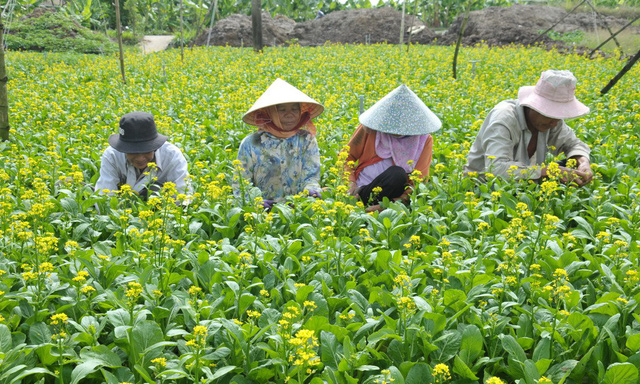 |
Farmers are seen at a clean vegetable farm in Tien Giang Province, southern Vietnam. Photo:Tuoi Tre
‘Pressing’ food producers for quality goods
Nguyen Kim Oanh, who distributes live pigs to a wholesale market in Hoc Mon District, outside Ho Chi Minh City, said she had stopped sourcing stock from small-scale farms after the southern metropolis launched a traceable pork program.
Oanh now buys pigs from a farm run by food processing firm CP, which ensures that its animals are fully traceable and meet all standards.
“This will expedite the processes of transporting and slaughtering pigs and the sale of pork,” Oanh explained.
“Vendors at smaller markets will also look to produce better quality meat as they will be fined if their pork is untraceable.”
Nguyen Van Cang, a farmer in the Central Highlands city of Da Lat, has switched from growing flowers to clean vegetables, applying strict agricultural practices set by a Ho Chi Minh City-based company, who buys all of his produce.
Cang said all he has to do is follow the guidelines on growing, plant protection and harvest set by his Ho Chi Minh City partner.
“I am totally banned from using chemical fertilizer or pesticides on my crops,” the farmer said, adding that these requirements are “even higher than those of VietGAP."
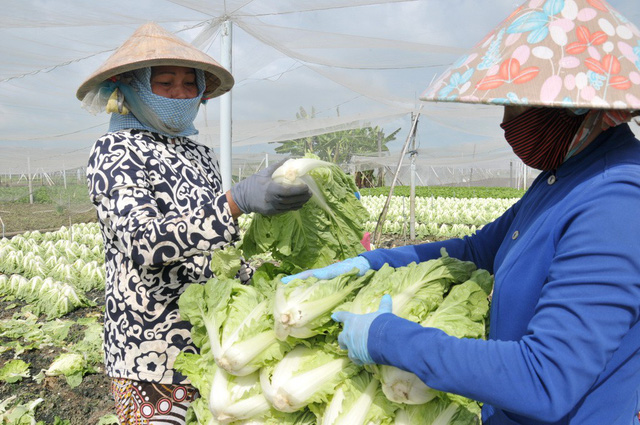 |
Farmers are seen at a clean vegetable farm in Tien Giang Province, southern Vietnam. Photo:Tuoi Tre
Cang and Oanh are two examples of the trend of food businesses and retailers no longer relying on national safety standards or VietGAP when sourcing their produce.
They have now set their own standard, which suppliers need to meet in order to enter their ‘new’ market.
“This will ensure the reputation and quality of the businesses and retailers, which in the end will also fortify their competitiveness,” Pham Duc Binh, deputy chairman of the husbandry association of the southern province of Dong Nai, explained.
Binh said that current food safety management is so ineffective that unsafe products continue to flood the market.
“A pig may be raised under VietGAP, but its meat, having gone through the slaughtering and transporting procedure, is no longer safe once it finally reaches the consumer,” he added.
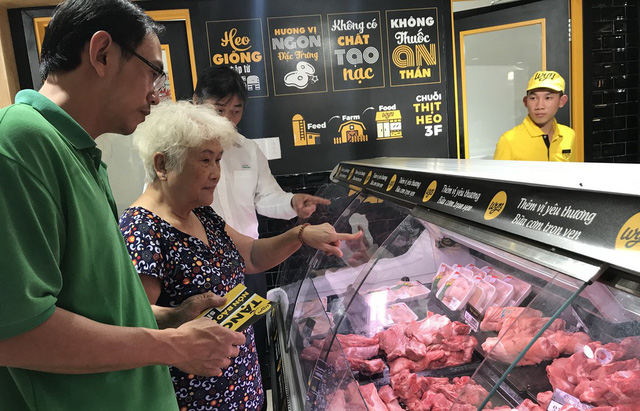 |
People buy traceable pork at a store in Ho Chi Minh City. Photo: Tuoi Tre
Now that consumers are increasingly aware of the importance of quality and safety in their daily meals, retailers and businesses are demanding more from the vegetables and meat they source from producers.
Bigger players in the retail sector, including supermarket chains like Co.op Mart and Big C, convenience stores like VinMart+, and shopping malls such as AEON, have also raised the bar for food suppliers, irrespective of current national standards.
Related News
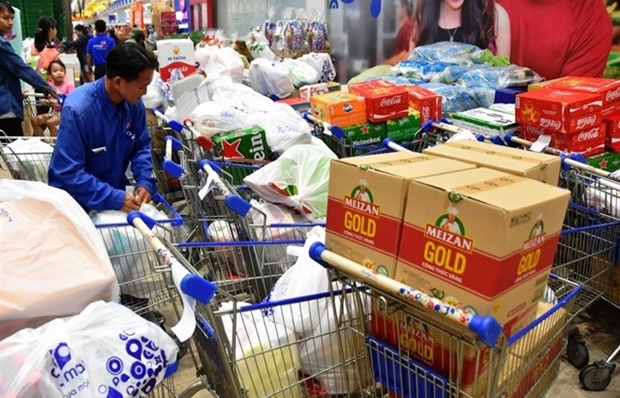
Retailers overwhelmed by surge in online orders for essential items
15:29 | 05/07/2021 Import-Export
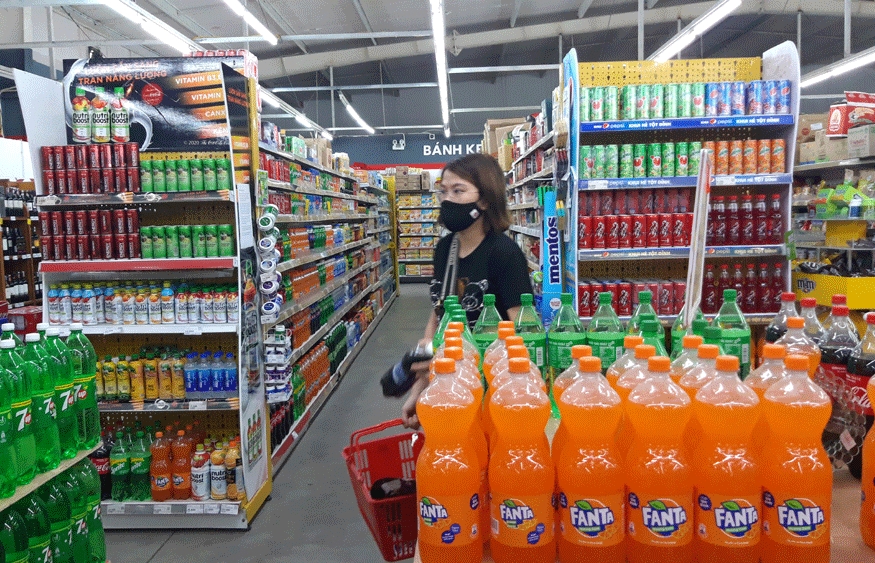
EVFTA puts great pressure on Vietnamese retailers
20:14 | 14/08/2020 Import-Export
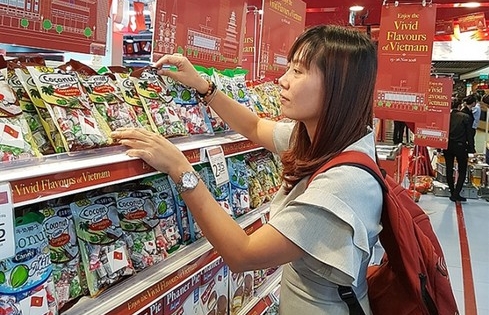
Products to join forces with large retailers, e-commerce platforms
18:00 | 19/03/2020 Import-Export
Latest News

Seafood exports expected to exceed $10 billion in 2025: expert
20:28 | 21/12/2024 Import-Export
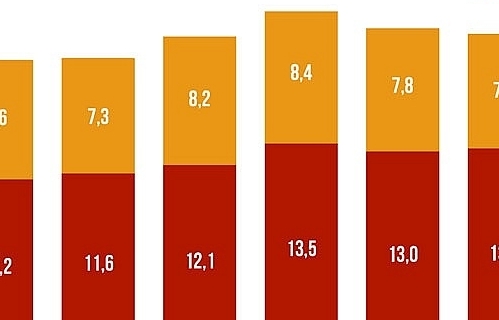
Top 10 Reputable Animal Feed Companies in 2024: Efforts to survive the challenges of nature
18:30 | 21/12/2024 Import-Export

Vietnam's import-export surges 15.3%
09:44 | 20/12/2024 Import-Export

More Vietnamese firms interested in Saudi Arabia: Ambassador
09:43 | 20/12/2024 Import-Export
More News

“Give and Take” in the Value Chain of the CPTPP Market
09:30 | 20/12/2024 Import-Export

Binh Dinh province works to attract investment from Japan
15:44 | 19/12/2024 Import-Export

Agricultural, forestry and fishery exports “reach the target” early
15:20 | 19/12/2024 Import-Export

Thailand remains Vietnam’s biggest trading partner in ASEAN
15:35 | 18/12/2024 Import-Export

Rubber value soars in 2024: VRA
15:33 | 18/12/2024 Import-Export
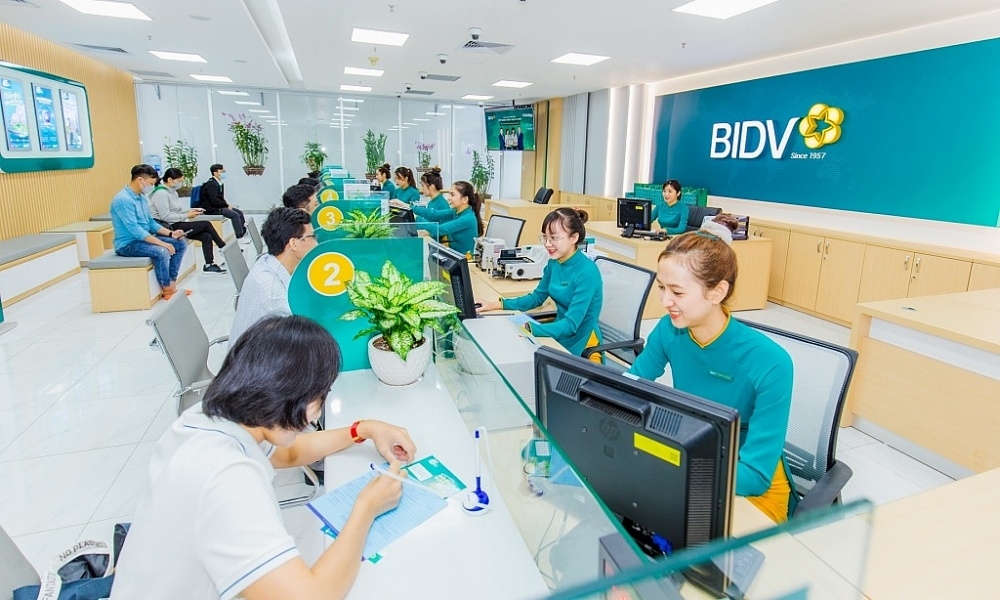
Vietnamese businesses struggle to access green finance
09:58 | 18/12/2024 Import-Export

E-commerce: a gateway to boost Vietnamese commodities in the UK market
16:55 | 17/12/2024 Import-Export

Agro-forestry-fisheries exports top 62 billion USD in 2024
16:51 | 17/12/2024 Import-Export
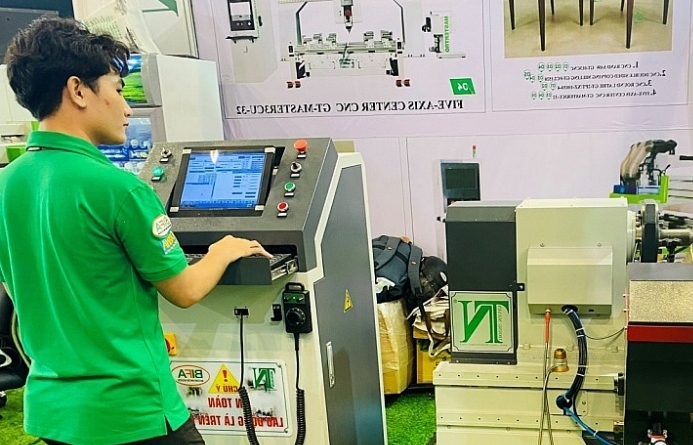
Removing “bottlenecks” for digital transformation in industrial production
10:00 | 17/12/2024 Import-Export
Your care

Seafood exports expected to exceed $10 billion in 2025: expert
20:28 | 21/12/2024 Import-Export

Top 10 Reputable Animal Feed Companies in 2024: Efforts to survive the challenges of nature
18:30 | 21/12/2024 Import-Export

Vietnam's import-export surges 15.3%
09:44 | 20/12/2024 Import-Export

More Vietnamese firms interested in Saudi Arabia: Ambassador
09:43 | 20/12/2024 Import-Export

“Give and Take” in the Value Chain of the CPTPP Market
09:30 | 20/12/2024 Import-Export




